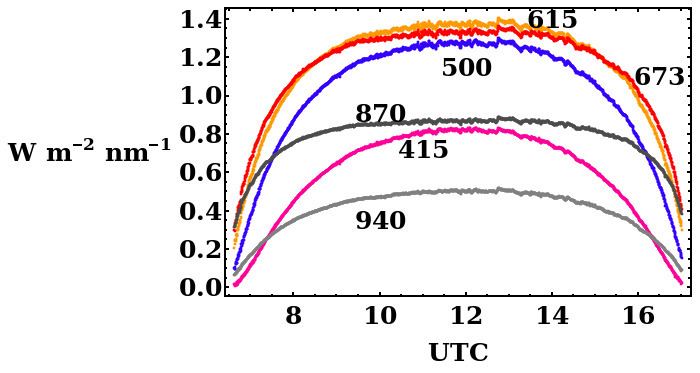 | ||
Langley extrapolation is a method for determining the Sun's radiance at the top of the atmosphere with ground-based instrumentation, and is often used to remove the effect of the atmosphere from measurements of, for example, aerosol optical thickness or ozone. It is based on repeated measurements with a sun photometer operated at a given location for a cloudless morning or afternoon, as the Sun moves across the sky. It is named for American astronomer and physicist Samuel Pierpont Langley.
Contents
Theory
It is known from Beer's law that, for every instantaneous measurement, the direct-Sun radiance I is linked to the solar extraterrestrial radiance I0 and the atmospheric optical depth
where m is a geometrical factor accounting for the slant path through the atmosphere, known as the airmass factor. For a plane-parallel atmosphere, the airmass factor is simple to determine if one knows the solar zenith angle θ: m = 1/cos(θ). As time passes, the Sun moves across the sky, and therefore θ and m vary according to known astronomical laws.
By taking the logarithm of the above equation, one obtains:
and if one assumes that the atmospheric disturbance
The requirement for good Langley plots is a constant atmosphere (constant
Solar cell calibration
A Langley plot can also be used as a method to calculate the performance of solar cells outside the Earth's atmosphere. At the Glenn Research Center, the performance of solar cells is measured as a function of altitude. By extrapolation, researchers determine their performance under space conditions.
Low cost LED-based photometers
Sun photometers using low cost light-emitting diode (LED) detectors in place of optical interference filters and photodiodes have a relatively wide spectral response. They might be used by a globally distributed network of students and teachers to monitor atmospheric haze and aerosols, and can be calibrated using Langley extrapolation. In 2001, David Brooks and Forrest Mims were among many to propose detailed procedures to modify the Langley plot in order to account for Rayleigh scattering, and atmospheric refraction by a spherical earth.
Di Justo and Gertz compiled a handbook for using Arduino to develop these photometers in 2012. The handbook refers to
where
where
